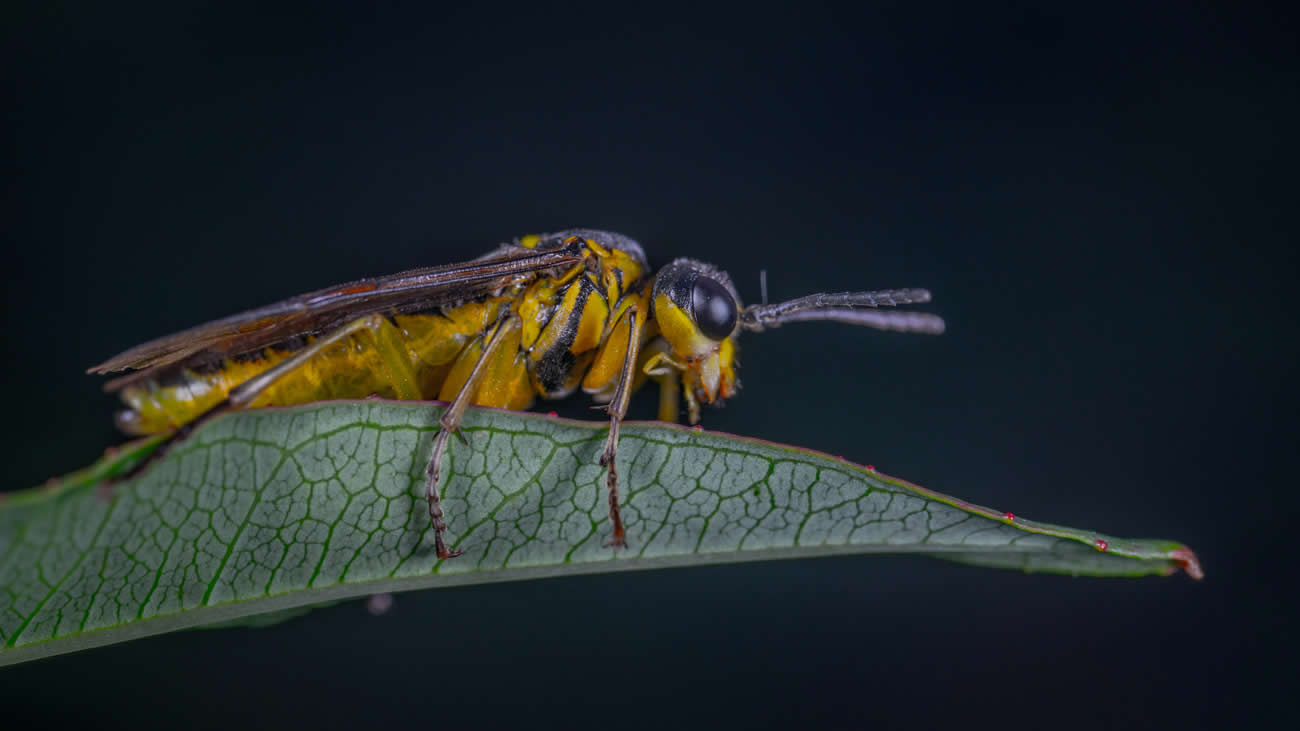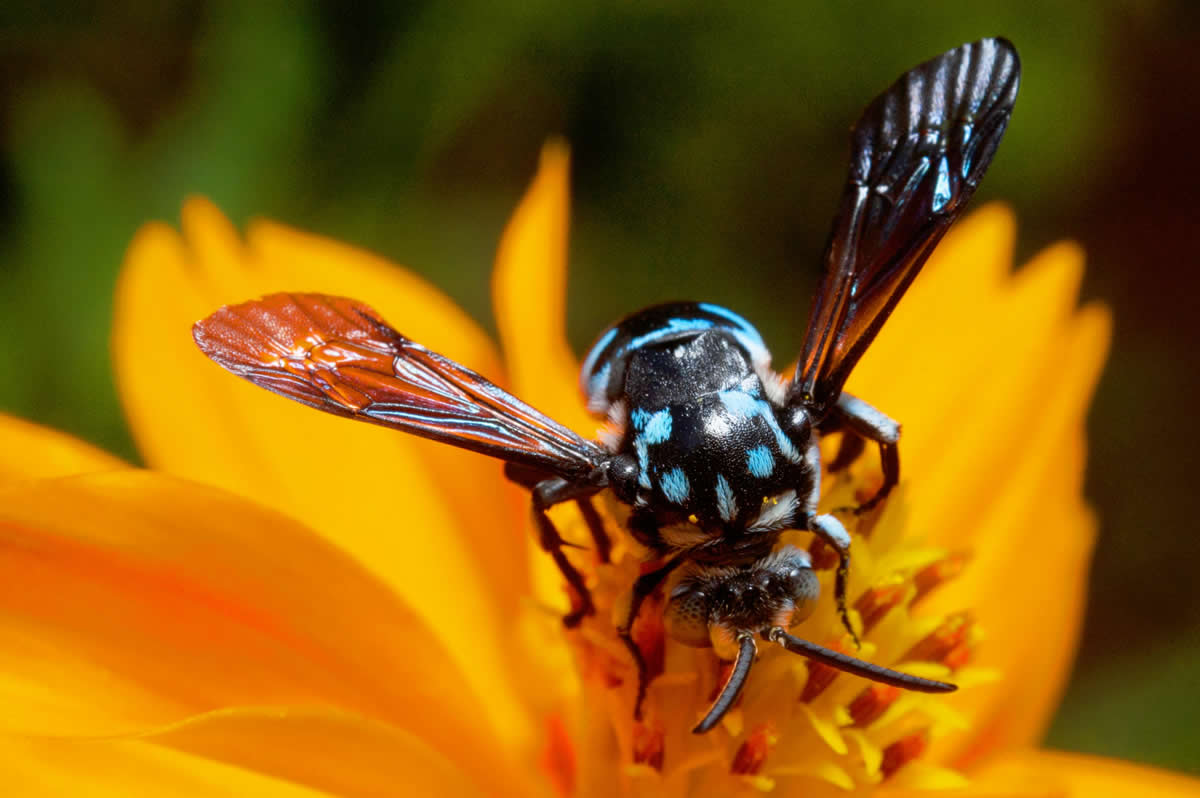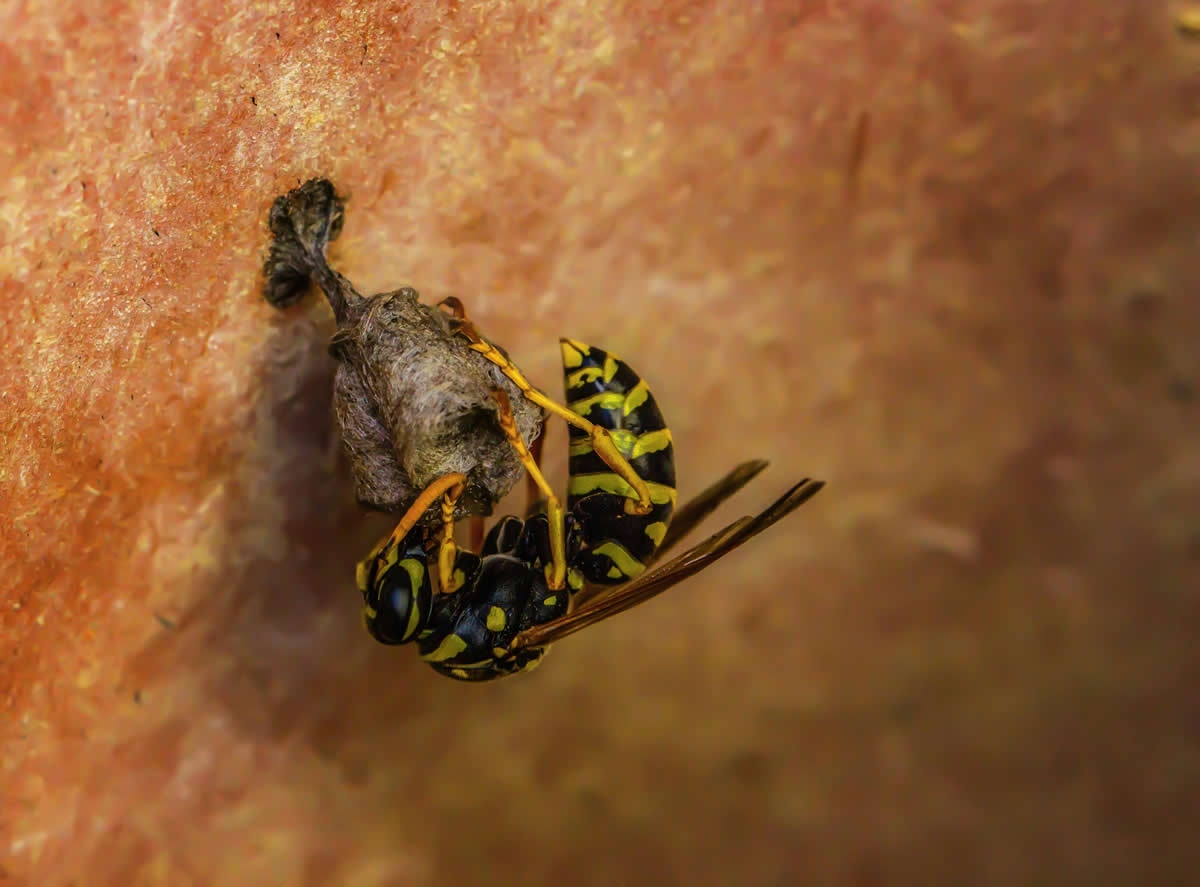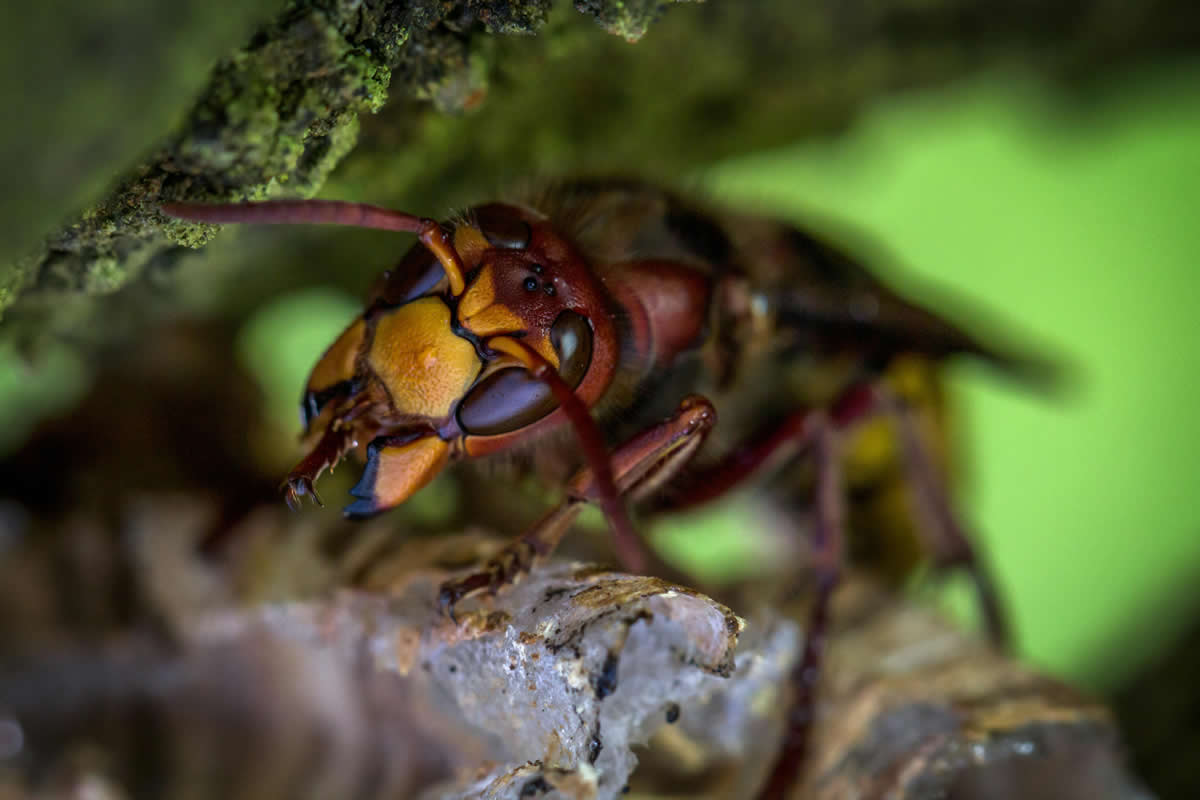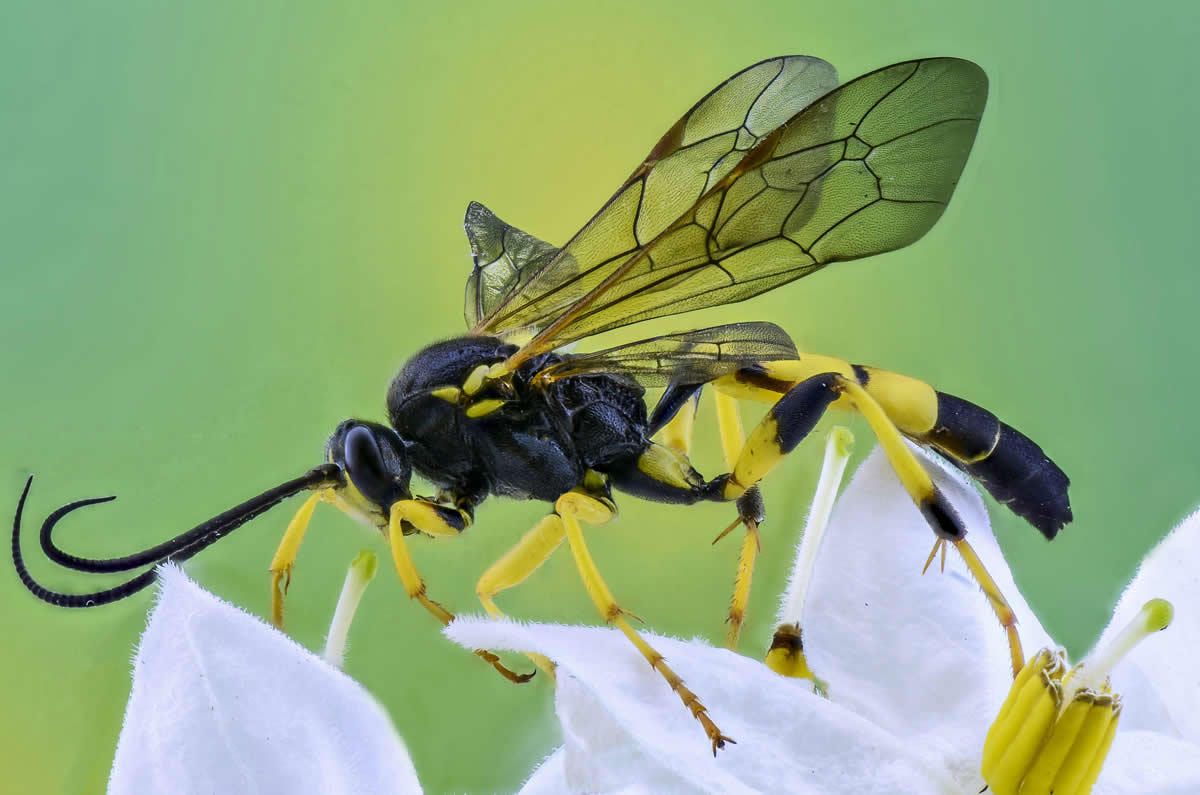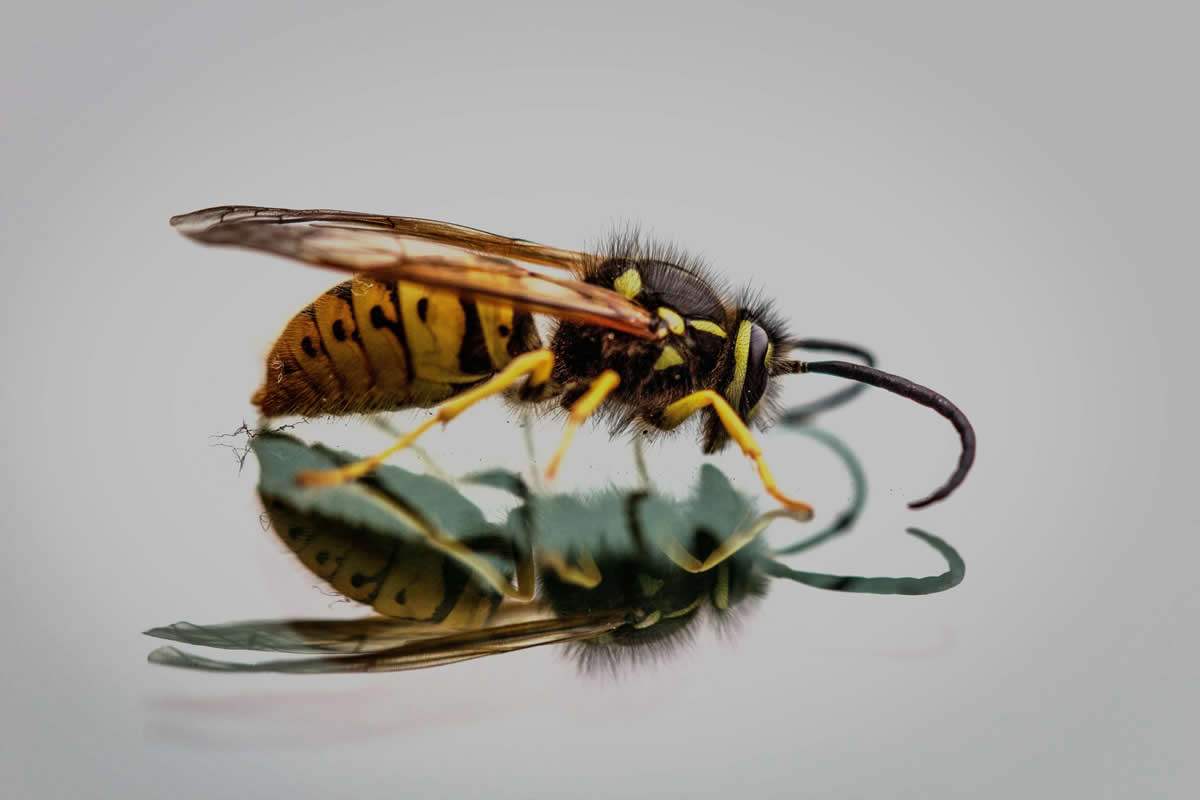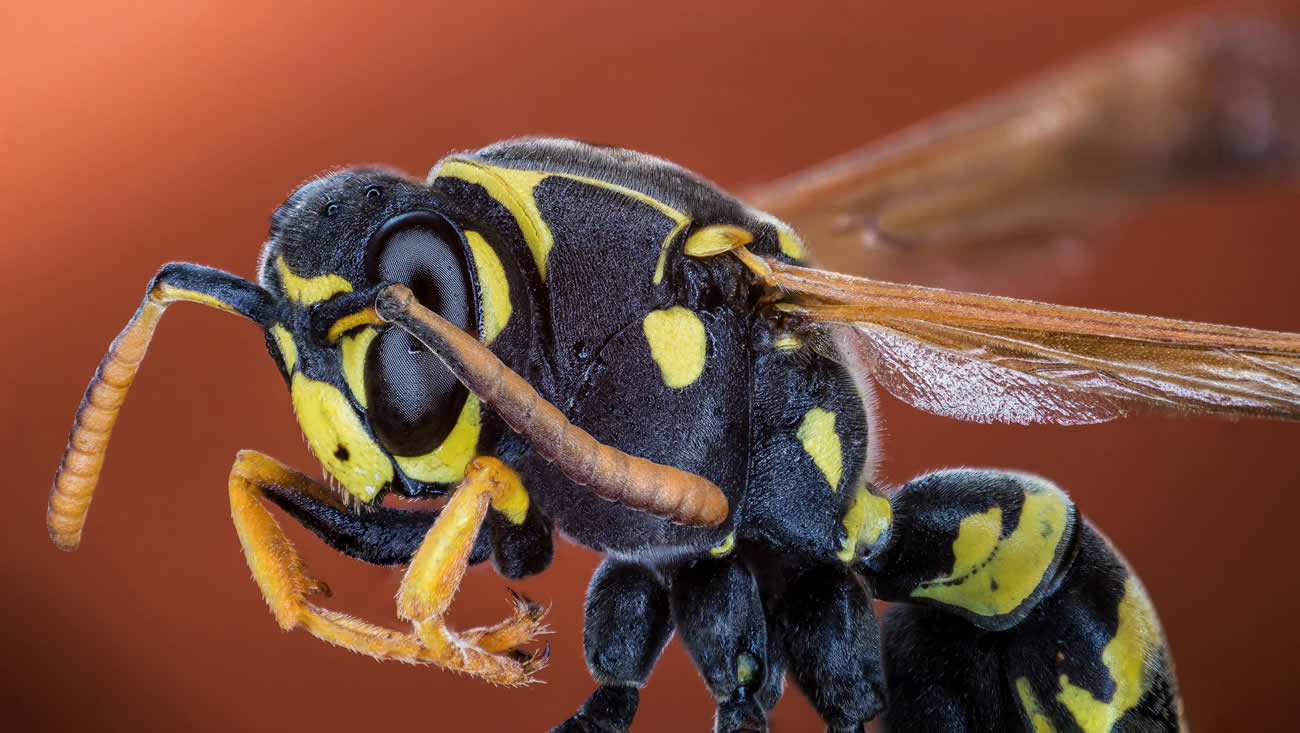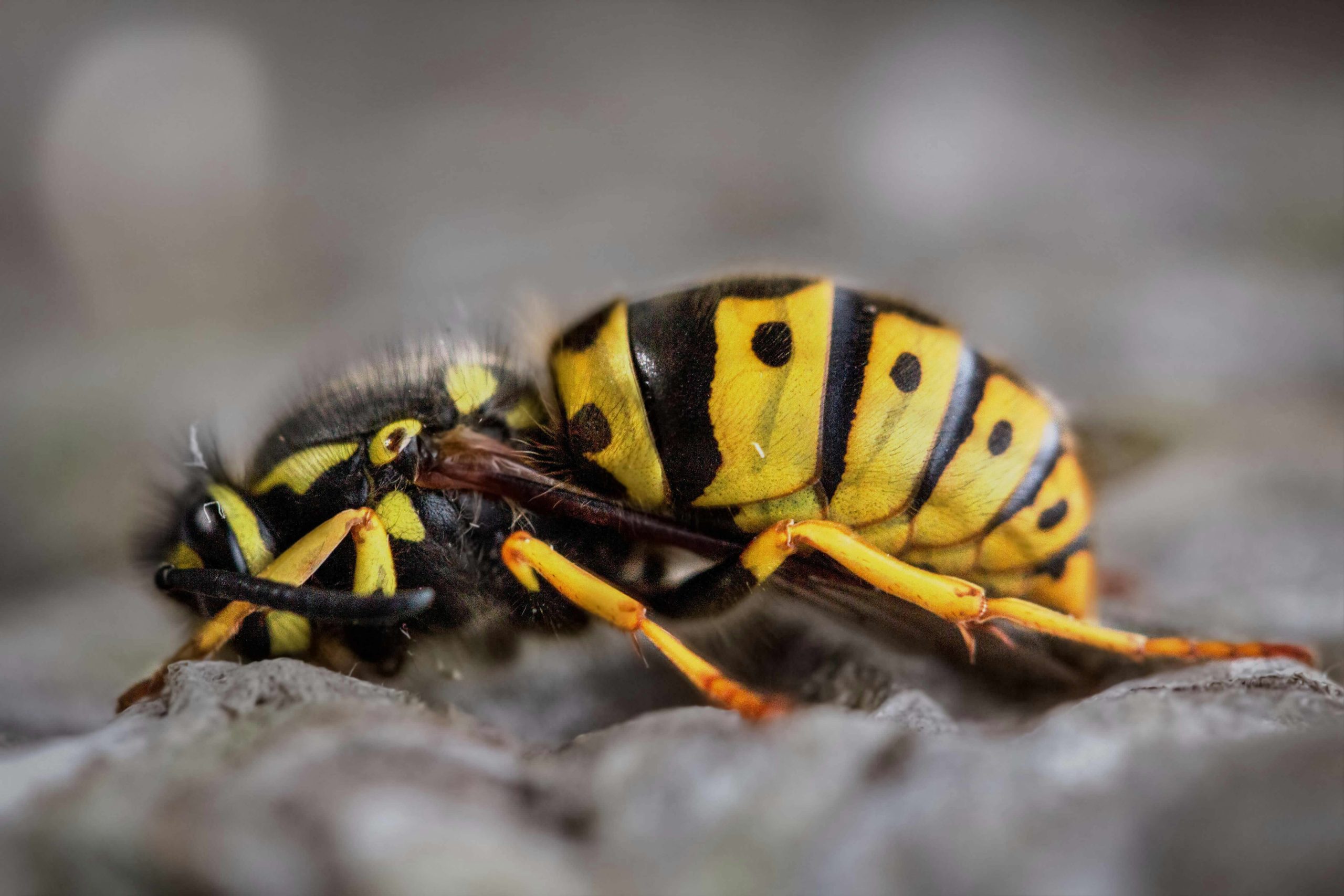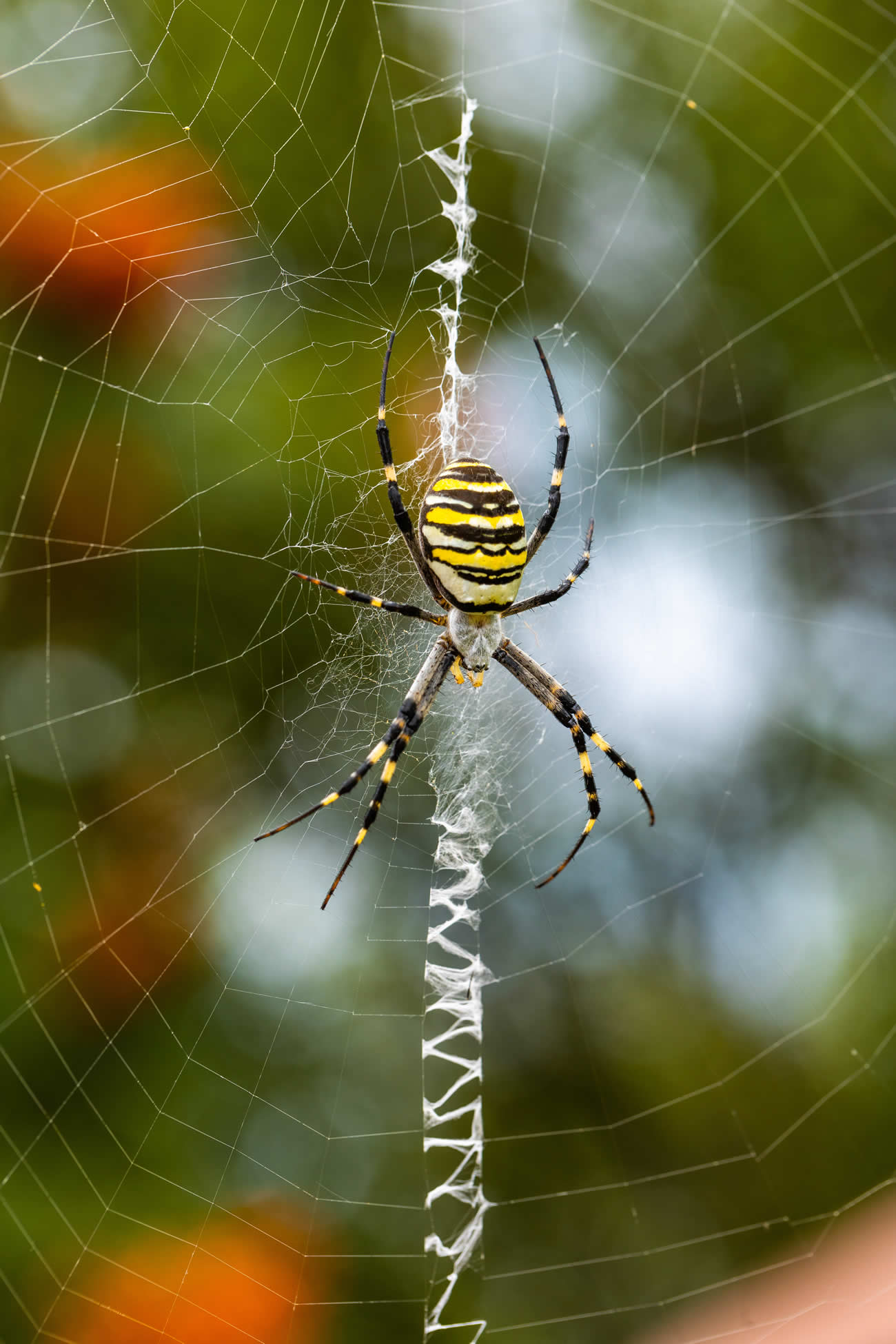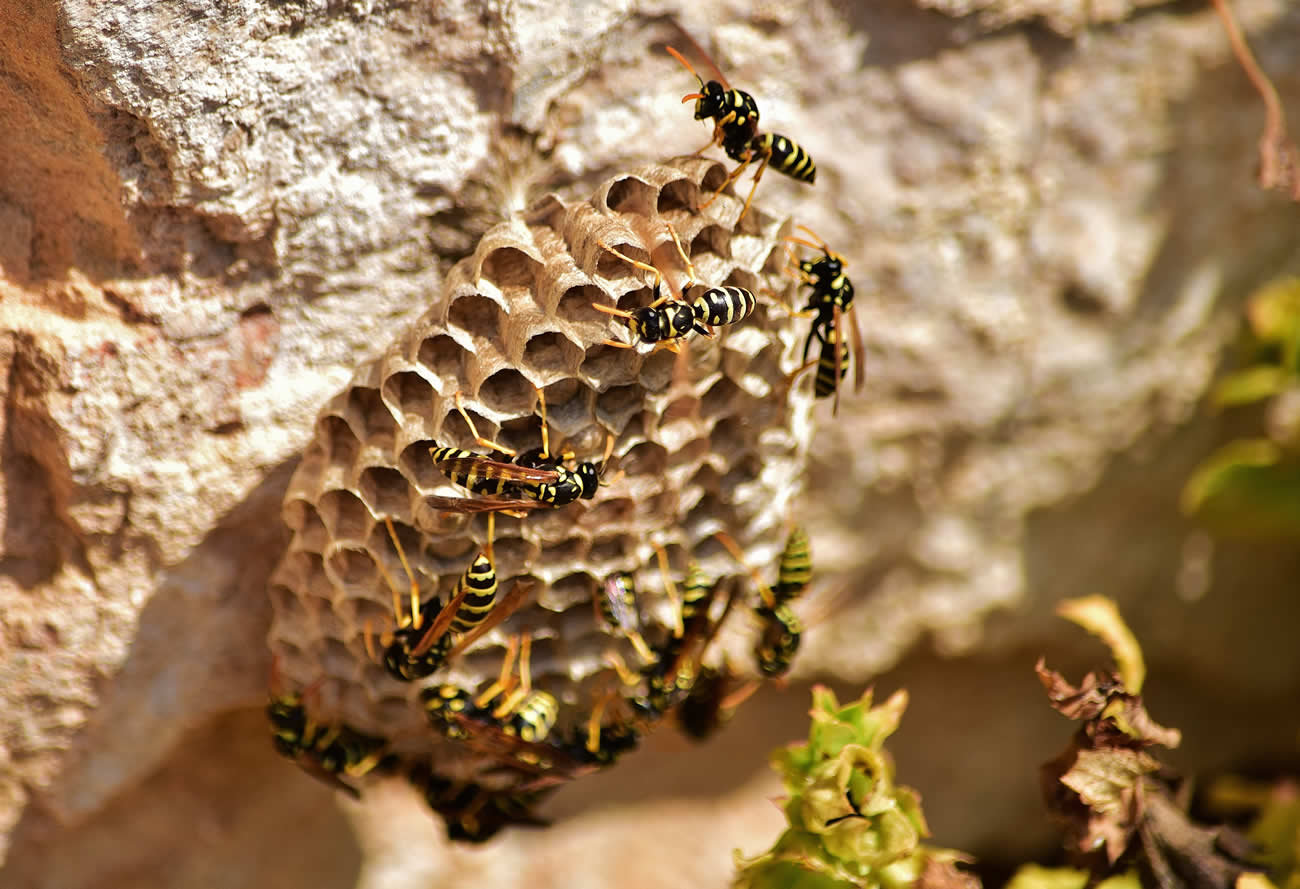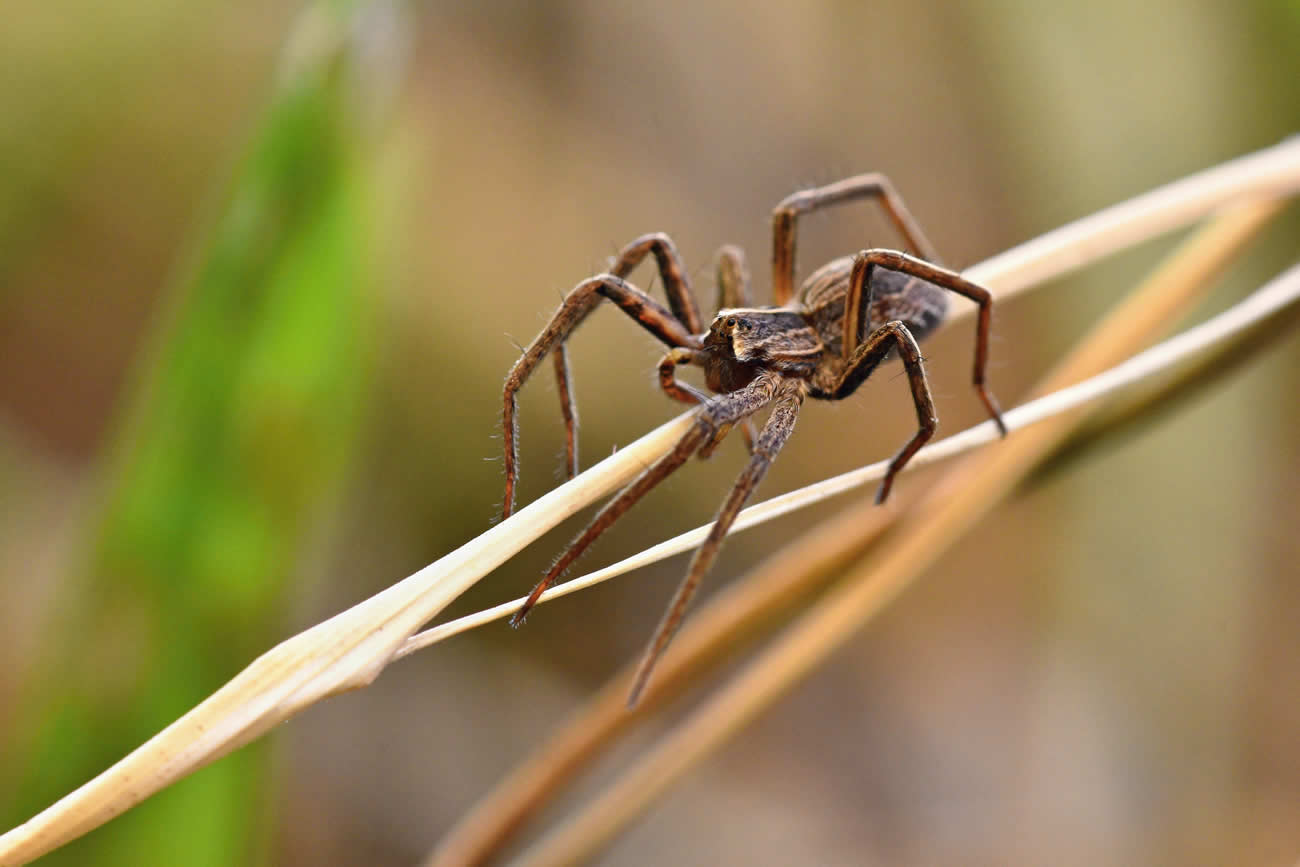A single wasp colony can grow to house over 10,000 wasps by July, making it crucial to understand when these insects become active in our environment. As we observe the patterns, wasps typically come out in April in the UK, with their activity steadily increasing through the warmer months.
We’ve found that wasp season reaches its peak during June and July when these striped insects become especially visible and aggressive while searching for food. Their presence continues until September, though climate change is now affecting their behaviour patterns. With queens emerging earlier from hibernation due to warmer temperatures, we’re seeing changes in traditional wasp activity cycles.
In this guide, we’ll explore the complete UK wasp calendar, examine their seasonal behaviour patterns, and share essential safety tips to help you navigate wasp season confidently.
Table of Contents
ToggleUnderstanding the UK Wasp Calendar
The lifecycle of wasps follows a predictable pattern throughout the British calendar. Each spring marks the beginning of a new colony’s journey, starting with the emergence of queen wasps from their winter slumber.
Spring emergence (March-April)
As temperatures begin to rise in March, queen wasps wake from hibernation to search for suitable nesting locations. These newly awakened queens first focus on gathering nectar from early spring flowers to replenish their energy. Subsequently, they begin the crucial task of constructing their nests using wood pulp – a mixture of chewed wood and their saliva. The queen builds the initial cells and lays her first batch of eggs, which will become the colony’s first worker wasps.
Peak activity period (June-August)
By June, wasp colonies reach their most active phase. The nest expands rapidly as worker wasps take over construction duties whilst the queen focuses solely on egg-laying, producing 200-300 eggs daily. The colony size grows impressively from approximately 5,000 wasps in spring to potentially 10,000 wasps by midsummer. Throughout this period, worker wasps maintain a constant buzz of activity, building the nest from golf ball to football size.
End of season behaviour (September-October)
The final phase of the wasp calendar brings significant changes to colony behaviour. From August onwards, the queen begins laying eggs that will develop into new queens and fertile males rather than worker wasps. The social structure of the colony starts breaking down as the original queen approaches the end of her life. Worker wasps, no longer bound by their nest duties, begin searching for sugary foods, which explains their increased presence around human food and ripe fruit.
The cycle concludes as temperatures drop, typically reaching its end when nighttime temperatures fall to 0 degrees Celsius. At this point, the newly mated queens seek out hibernation spots whilst the remaining colony, including workers and males, perishes. These surviving queens will emerge the following spring, ready to start the cycle anew.
How Wasps Behave Through the Seasons
Wasps’ remarkable survival strategies showcase nature’s intricate design. These fascinating insects display distinct behavioural patterns as seasons change, with both queens and workers playing vital roles in the colony’s success.
Queen’s winter survival
The survival of wasp species hinges on the queen’s ability to endure winter. Queens produce a natural antifreeze substance in their bodies, preventing ice crystals from forming even in freezing temperatures. Nevertheless, the odds remain challenging – merely two queens survive out of 4,500 each year.
Queens enter a state called diapause, significantly reducing their metabolism to conserve energy. They tuck their antennae between their legs and bite into surfaces to maintain their position throughout hibernation. Interestingly, this process uses minimal fat reserves, allowing most queens to survive the resting period.
The selection of hibernation spots proves crucial for survival. Queens seek sheltered locations behind tree bark, inside old rabbit burrows, or within building crevices. However, these hiding spots often expose them to predators like spiders, which actively hunt hibernating insects.
Worker wasp activities
Worker wasps, all sterile females, demonstrate remarkable age-based task specialisation. Fresh workers spend their initial three to four days inside the nest, focusing on larval care. As they mature, their responsibilities expand to include water collection and nest construction.
These industrious insects display impressive engineering skills. They mix water with wood fibre to create building materials, using the mixture to carve out and expand nest entrances. The workers form pellets from this combination, which they then transport away from the nest.
Most foraging trips keep workers within a few hundred metres of their nest, although they occasionally venture up to a kilometre away. Their food-gathering strategy is particularly fascinating – despite having limited digestive enzymes, they collect raw food and pass it to other workers who feed the larvae. In return, the larvae produce a nutrient-rich ‘soup’ that sustains the workers.
The queen’s presence significantly influences worker behaviour through pheromone release, which prevents workers from developing reproductive capabilities. Should the queen perish, workers begin developing ovaries within weeks and eventually lay eggs, albeit producing only male wasps.
The lifespan of worker wasps remains relatively brief, with most surviving less than three weeks. Their dedication to colony tasks continues until autumn, after which the social structure dissolves as new queens prepare for hibernation. This cycle ensures the species’ continuation, with successful queens emerging in spring to establish new colonies.
Identifying Wasp Activity Near Your Home
Spotting wasp activity around your property requires careful observation and understanding of their behaviour patterns. These industrious insects leave distinct signs that help identify their presence before they become a nuisance.
Common nesting spots
Wasps demonstrate remarkable adaptability when choosing their nesting locations. They primarily seek dry, dark, and undisturbed spaces with easy access to dead wood. Most commonly, wasps build their nests in loft spaces, brick wall cavities, garden sheds, and under-roof eaves. Furthermore, they often use deserted mammal holes, cracks in walls, and hollow trees to establish their colonies.
Signs of nearby nests
Several telltale indicators suggest the presence of a wasp nest in your vicinity. First, continuous wasp traffic to and from a specific location, notably around holes in walls or roof areas, signals an active nest. Moreover, a distinct scratching or clicking sound within walls often indicates nest construction activities.
Another crucial sign emerges when wasps appear indoors despite closed windows, suggesting a nest within the building structure. Additionally, wasps harvesting wood from garden furniture or fence panels indicate a nest nearby, as they prefer gathering materials from close sources.
Typical flight patterns
Understanding wasp flight behaviour helps in locating their nests safely. These insects follow predetermined flight paths, much like aircraft at an airport. They employ sophisticated navigation techniques, performing ‘test flights’ before leaving their nests to memorise distinctive features around the entrance.
When departing their nest, wasps execute a unique pattern – turning to face the entrance, flying in an arc while watching it, and gradually backing away in wider arcs. This zigzagging flight path allows them to memorise scene markers from various angles, ensuring successful navigation back to the nest.
For safety purposes, I recommend observing these flight paths from a distance. By identifying their established routes, you can avoid accidentally disrupting their paths, which might trigger defensive behaviour. Furthermore, wasps maintain specific entry and exit routes, often using two distinct paths for coming and going.
Staying Safe During Peak Wasp Season
Treating wasp stings requires understanding their defensive behaviour and knowing how to respond when encountering these insects. Wasps sting primarily in self-defence or when safeguarding their colony, so it is essential to recognise what triggers their aggressive responses.
Understanding wasp aggression triggers
Wasps become defensive primarily when they perceive threats to their nest or colony. At peak summer, a single wasp nest can house between 5,000 and 10,000 wasps. These insects employ ‘guardian wasps’ that patrol the nest’s exterior, ready to alert the colony of potential dangers.
Certain activities near nests can provoke attacks. For instance, lawn mowing directly over ground nests triggers aggressive responses, as both noise and vibration stimulate defensive behaviour. Likewise, wasps release attack pheromones when threatened, summoning the entire colony to join the defence.
In autumn, wasps exhibit increased aggression whilst searching for sugar. Interestingly, rotting fruit consumption can make wasps slightly intoxicated, heightening their aggressive tendencies. Similarly, wasps attracted to beer and cider become more prone to stinging when intoxicated.
Safe distances from nests
Maintaining an appropriate distance from wasp nests proves crucial for safety. If you spot wasps flying in consistent patterns, pause to observe their movement, as this often indicates a nearby nest. You can safely pass within two metres of a nest provided you move slowly and quietly, avoiding their main flight path.
Essential safety measures include:
- Remaining calm if wasps approach – panic and arm-waving typically provoke defensive responses
- Avoiding dark clothing near nests, as wasps interpret dark shapes as potential predators
- Steering clear of banana-scented products since their attack signal resembles this scent
Should you accidentally disturb a nest, move away steadily and avoid returning to the area for at least 30 minutes. Remember that wasp nests often cluster together, with several nests potentially existing within a few square metres.
The risk increases with frequent exposure for those with known allergies. Certain professions, such as gardeners and refuse collectors, face higher risks of serious reactions. Consequently, maintaining safe distances and recognising warning signs becomes particularly vital for these individuals.
Our Final Say!
Understanding wasp behaviour and seasonal patterns helps us stay safe while these beneficial insects fulfil their role in our ecosystem. Though wasps become active as early as March, their peak activity occurs between June and August, when colony sizes can exceed 10,000 members.
We’ve seen how wasps display fascinating behaviours throughout their lifecycle, from the queen’s remarkable winter survival strategies to the workers’ precise engineering skills. Their predictable patterns and telltale signs make it possible to identify nearby nests before they become problematic.
Safety remains paramount during wasp season. Maintaining appropriate distances from nests, recognising aggression triggers, and responding calmly to wasp encounters significantly reduces sting risks. This knowledge becomes especially vital during late summer and autumn when wasps display more aggressive behaviour while searching for sugar.
Climate change continues to affect traditional wasp patterns, with queens emerging earlier each spring. Therefore, staying alert and applying these safety guidelines helps ensure peaceful coexistence with these remarkable insects throughout their active season.
Are you looking for pest control in Hertfordshire? Get in touch with us and a local pest removal company will be in touch.

